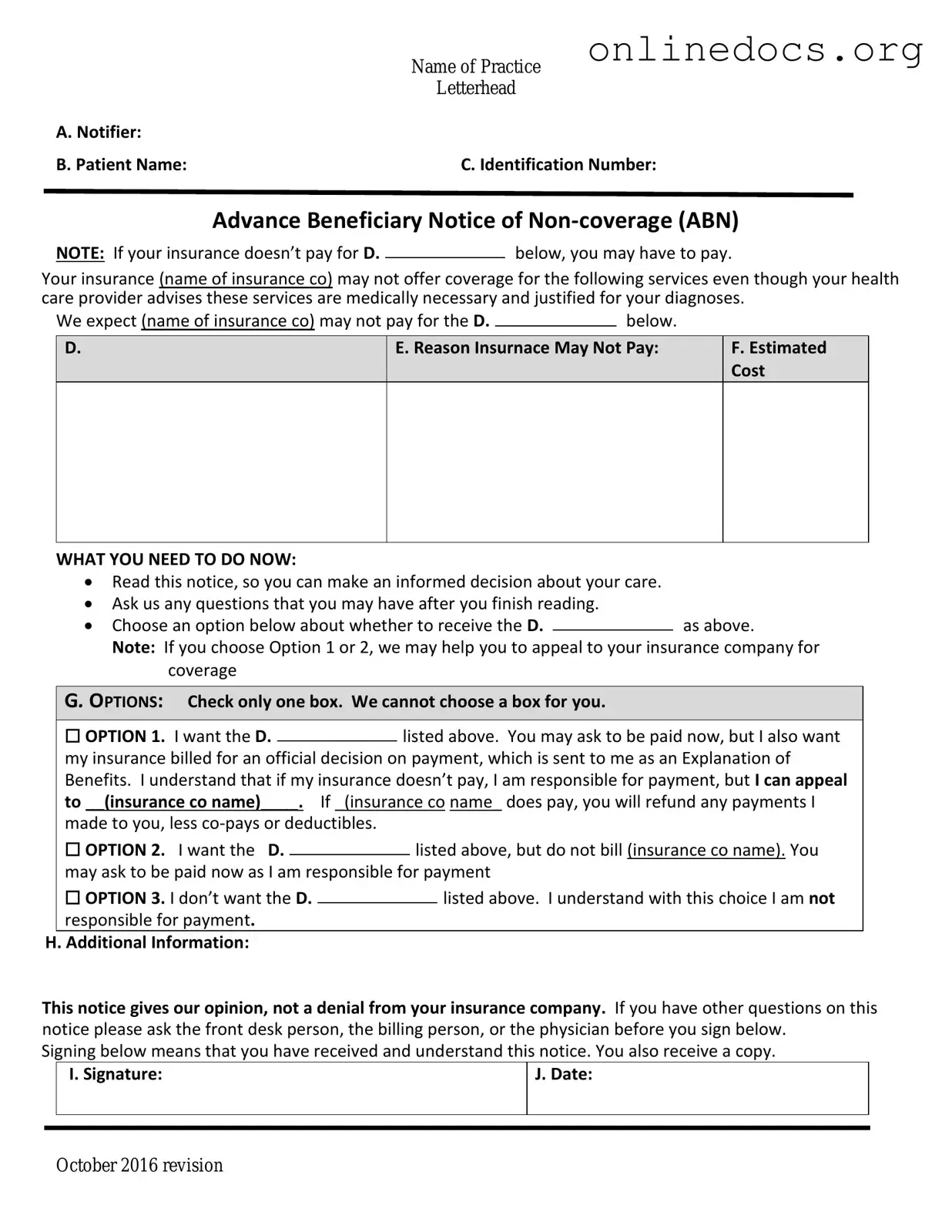The Advance Beneficiary Notice of Non-coverage (ABN) is a crucial document in the healthcare landscape, particularly for Medicare beneficiaries. It serves to inform patients when a service may not be covered by Medicare. This proactive communication helps patients make informed decisions regarding their healthcare options. Similar to the ABN, the Medicare Summary Notice (MSN) provides beneficiaries with detailed information about the services they received, the amount billed, and what Medicare covered. Both documents aim to enhance transparency and ensure that patients are aware of their financial responsibilities regarding their care.
Another document that shares similarities with the ABN is the Explanation of Benefits (EOB). An EOB is issued by private insurance companies and outlines the services provided, the amount billed, and the portion that the insurance will pay. Like the ABN, the EOB helps patients understand their coverage and any out-of-pocket expenses they may incur. Both documents serve as essential tools for patients to navigate their healthcare costs and understand their financial obligations.
The Notice of Exclusion from Medicare Benefits (NEMB) also resembles the ABN in its purpose. This notice is given when a service is excluded from Medicare coverage. It informs patients that they will be responsible for the costs associated with the service. Similar to the ABN, the NEMB empowers patients by providing them with information about their coverage options, allowing them to make informed choices about their healthcare services.
To ensure your wishes are honored after your passing, consider drafting a legal document such as a "comprehensive guide to creating a Last Will and Testament." This will not only provide clarity about the distribution of your assets but will also help in making essential decisions regarding any minor children involved. For further details, visit the comprehensive guide to creating a Last Will and Testament.
The Out-of-Pocket Cost Estimate (OCE) is another document that aligns with the ABN in its goal of financial transparency. The OCE provides an estimate of the costs a patient might incur for a specific service, helping them to prepare financially. While the ABN alerts patients to potential non-coverage, the OCE gives them a clearer picture of expected expenses, thus fostering informed decision-making regarding their healthcare services.
Furthermore, the Beneficiary Notice of Non-coverage (BNNC) is akin to the ABN in that it informs beneficiaries when a service will not be covered by Medicare. This notice serves a similar function by ensuring that patients are aware of their financial responsibilities before receiving care. Both documents are designed to minimize confusion and enhance patient understanding of their healthcare coverage.
Lastly, the Patient Responsibility Notice (PRN) also shares commonalities with the ABN. The PRN is used by healthcare providers to notify patients about their financial obligations for services rendered. Like the ABN, it emphasizes the importance of clear communication regarding costs and coverage, ensuring that patients can make informed choices about their healthcare and finances.
